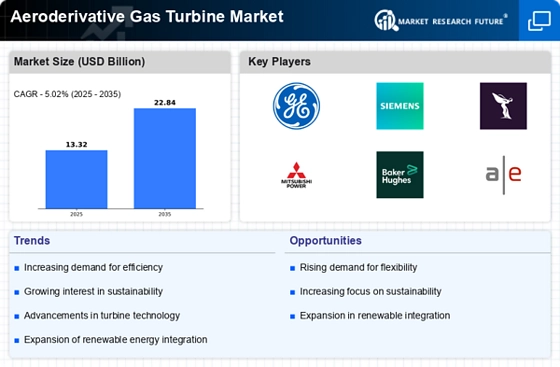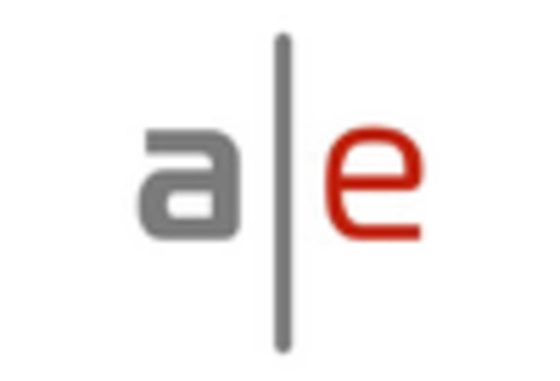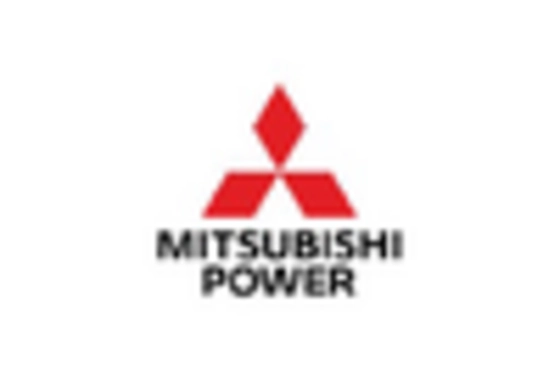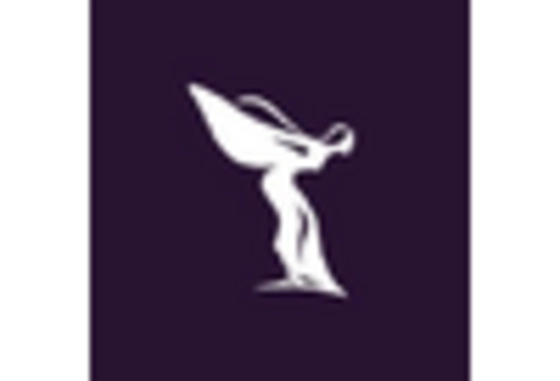Sustainability Focus
The increasing emphasis on sustainability is a driving force within the Aeroderivative Gas Turbine Market. As nations strive to meet stringent environmental regulations and reduce carbon emissions, the demand for cleaner energy sources is escalating. Aeroderivative gas turbines, known for their lower emissions compared to traditional fossil fuel power generation methods, are becoming increasingly attractive. Data indicates that these turbines can achieve up to 50% lower emissions of nitrogen oxides, a critical factor in urban air quality. Furthermore, the ability to utilize renewable fuels, such as biogas and hydrogen, positions aeroderivative gas turbines as a versatile solution in the transition towards a more sustainable energy landscape. This focus on sustainability not only enhances the market appeal of these turbines but also aligns with global energy policies aimed at combating climate change.
Flexible Power Generation
The demand for flexible power generation solutions is a significant driver in the Aeroderivative Gas Turbine Market. As energy systems evolve to accommodate variable renewable energy sources, the need for quick-start and adaptable power generation technologies becomes paramount. Aeroderivative gas turbines are particularly well-suited for this role due to their rapid ramp-up capabilities and operational flexibility. They can efficiently respond to fluctuations in electricity demand, making them ideal for balancing intermittent renewable sources like wind and solar. Recent market analyses suggest that the share of aeroderivative gas turbines in peaking power applications is projected to grow, reflecting their critical role in ensuring grid stability. This adaptability not only enhances the reliability of energy supply but also supports the integration of renewables, thereby reinforcing the importance of aeroderivative gas turbines in modern energy systems.
Technological Advancements
The Aeroderivative Gas Turbine Market is experiencing a surge in technological advancements that enhance efficiency and performance. Innovations in materials and design are leading to turbines that operate at higher temperatures and pressures, thereby increasing their power output. For instance, the introduction of advanced cooling techniques and additive manufacturing is allowing for more complex geometries that improve aerodynamics. According to recent data, the efficiency of modern aeroderivative gas turbines has reached levels exceeding 40%, which is a notable improvement over previous generations. This trend not only boosts the operational capabilities of power plants but also reduces fuel consumption, aligning with the industry's shift towards more sustainable energy solutions. As these technologies continue to evolve, they are likely to play a pivotal role in shaping the future landscape of the Aeroderivative Gas Turbine Market.
Regulatory Support and Incentives
Regulatory support and incentives are shaping the landscape of the Aeroderivative Gas Turbine Market. Governments worldwide are implementing policies that promote cleaner energy technologies, including aeroderivative gas turbines. These policies often include financial incentives, tax breaks, and grants aimed at encouraging investment in advanced gas turbine technologies. Recent legislative measures have been introduced to facilitate the transition to low-emission power generation, which directly benefits the aeroderivative gas turbine sector. For instance, some regions have established renewable energy targets that necessitate the integration of cleaner technologies into the energy mix. This regulatory environment not only fosters innovation within the industry but also enhances the market potential for aeroderivative gas turbines, as stakeholders seek to align with evolving energy policies and consumer preferences for sustainable solutions.
Economic Growth and Industrialization
Economic growth and industrialization are pivotal factors propelling the Aeroderivative Gas Turbine Market. As developing economies expand, the demand for reliable and efficient power generation solutions intensifies. Aeroderivative gas turbines, with their high efficiency and lower capital costs compared to traditional gas turbines, are increasingly favored for new power projects. Data indicates that regions experiencing rapid industrialization are witnessing a surge in investments in gas turbine technology, as these systems can be deployed quickly to meet rising energy demands. Furthermore, the ability to provide both base load and peak power generation makes aeroderivative gas turbines an attractive option for countries looking to enhance their energy infrastructure. This trend underscores the critical role of aeroderivative gas turbines in supporting economic development and energy security in emerging markets.


















Leave a Comment